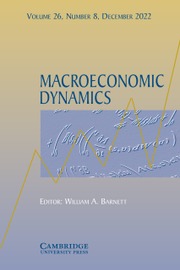No CrossRef data available.
Article contents
Fiscal sustainability under an endogenous fiscal feedback rule: a state space approach
Published online by Cambridge University Press: 18 August 2025
Abstract
This study proposes a novel time-varying, endogenous fiscal reaction function, and investigates whether and how the US government responded to the rising debt to assess the sustainability of its debt over 1916 to 2022. The reaction function is estimated via a state space model using Bayesian methods by treating its coefficient as an unobservable stochastic process. Although there is evidence that the government considered long-term projections of the interest rate in its fiscal decisions, the response to debt was largely driven by unobservable non-economic factors and by large and persistent shocks. We find that the government was more proactive about constraining debt increases during the 20th century than previously thought (such as in Bohn, 1998), but it has become less aggressive ever since. The debt-GDP ratio was sustainable for almost the entire sample period, but its steady state value has been rising consistently in recent years. The government’s response to debt contributed 6.0 percentage points to the surplus-GDP ratio in the postwar 20th century, but only 3.6 percentage points afterward.
Keywords
Information
- Type
- Articles
- Information
- Copyright
- © The Author(s), 2025. Published by Cambridge University Press

